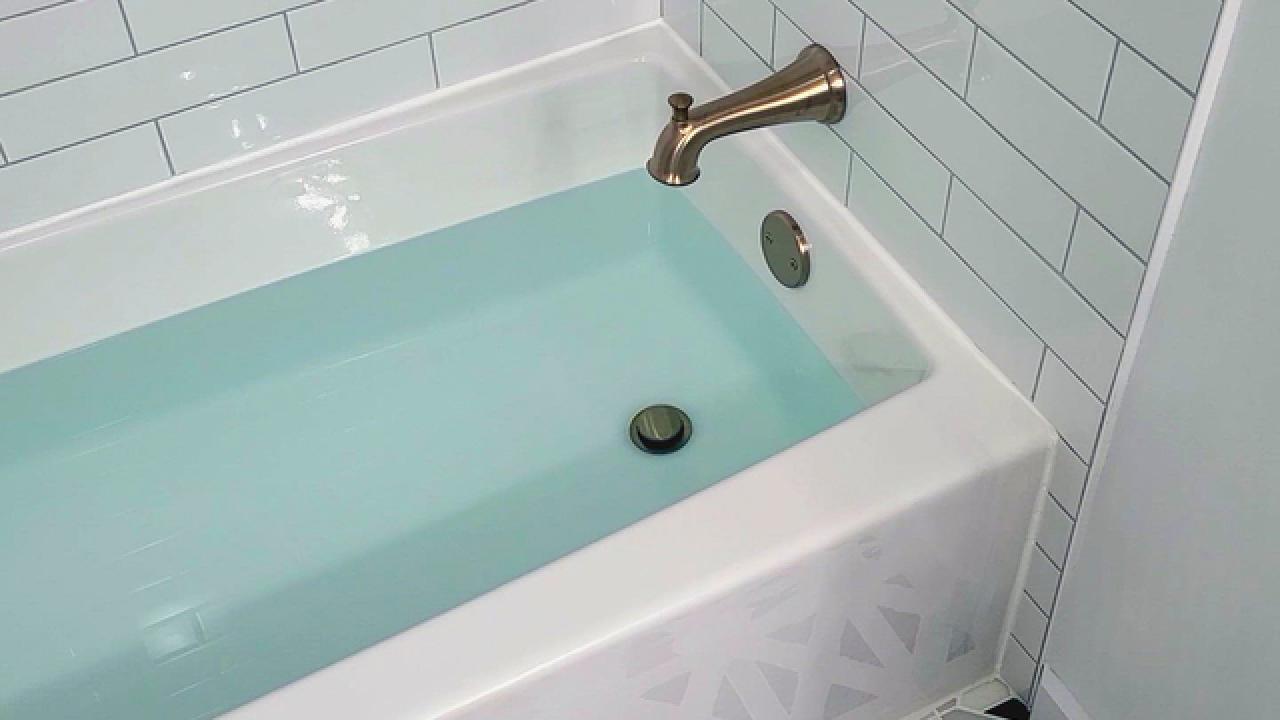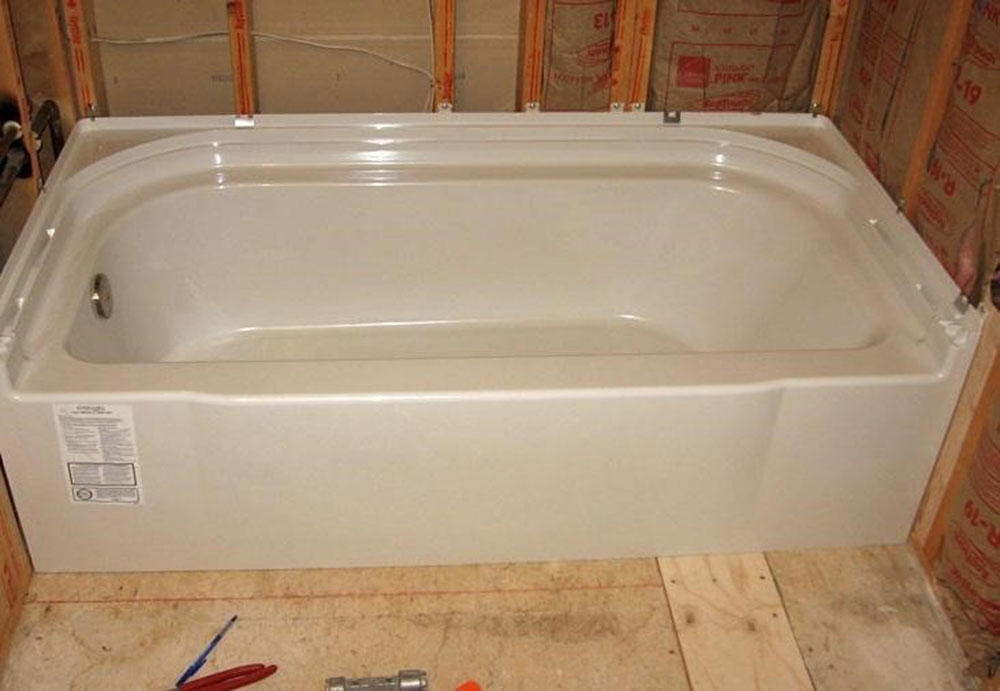We have unearthed this post relating to A Step-by-Step Guide to Installing a Bathtub directly below on the web and decided it made sense to share it with you over here.

Mounting a bath tub isn't exactly rocket science, however it does call for solid plumbing, woodworking, and in some cases, tiling abilities. Changing an old bathtub with a new one is likewise a reasonably hard task. If the old tub is readily easily accessible, the project can move easily; if you have to open a wall to eliminate the old bathtub as well as place the brand-new tub, the task is much harder. In either situation, the project is within a house handyman's skills, although you will need a helper to vacate the old bathtub and also set in the new one. Ensure you have qualified yourself for the task as well as fit trying it. Instead of hiring a professional to take control of a halfway-completed project, it is better to consider employing one prior to you start. Opportunities are you might require an expert plumber to make tube links.
This post will assist you set up a new bathtub in your bathroom if you have actually currently gotten a new tub and don't require to transform the plan of your previous supply of water pipes.
Your devices as well as material checklist should consist of the following:
Removing Old Taps
If you need to change old faucets with new ones as a part of your installation, after that the first thing you must do is detach the supply of water. After doing so, activate the taps to drain any type of water remaining in the system. The procedure of eliminating the existing taps can be fairly bothersome due to the restricted accessibility that is commonly the case.
Make use of a basin wrench (crowsfoot spanner) or a tap device to undo the nut that connects the supply pipelines to the taps. Have a cloth all set for the remaining water that will certainly come from the pipelines. When the supply pipes have been eliminated, use the very same tool to loosen up the nut that holds the faucets onto the bath/basin. You will require to stop the solitary taps from transforming during this procedure. When the taps have actually been removed, the holes in the bath/basin will certainly have to be cleaned of any type of old sealing substance.
Before going on to fit the new faucets, compare the pipeline links on the old taps to the new faucets. If the old taps are longer than the brand-new taps, then a shank adapter is required for the new faucets to fit.
Fitting New Touches
If the tails of the new faucets are plastic, then you will certainly require a plastic port to prevent damages to the string. One end of the port fits on the plastic tail of the tap as well as the other end supplies a connection to the existing supply pipes.
If you require to fit a monobloc, after that you will require lowering couplers, which connects the 10mm pipeline of the monobloc to the standard 15mm supply pipeline.
Next off, position the faucet in the placing hole in the bath/basin making certain that the washers remain in place in between the tap and also the sink. Secure the faucet in place with the supplier offered backnut. As soon as the tap is firmly in place, the supply pipelines can be connected to the tails of the faucets. The faucets can either be connected by using corrugated copper piping or with typical faucet ports. The previous type must be connected to the faucet finishes first, tightening up only by hand. The supply pipelines can later on be attached to the other end. Tighten up both ends with a spanner after both ends have actually been connected.
Mounting the Bathtub
Utilizing both wood boards under its feet, position the bathtub in the needed placement. The wooden boards are valuable in equally spreading the weight of the tub over the location of the boards instead of concentrating all the weight onto 4 small factors.
The following objective is to ensure that the bathtub is leveled all round. This can be accomplished by examining the level and adjusting the feet on the tub up until the level reviews degree.
To install taps, fit the bottom of the furthest versatile tap connector to the suitable supply pipe by making a compression sign up with; after that do the very same for the various other faucet.
Switch on the water supply and check all joints as well as new pipework for leaks and tighten them if required. Fill up the tub and likewise inspect the overflow electrical outlet as well as the regular electrical outlet for leakages.
Ultimately, deal with the bath paneling as explained in the supplier's user's manual. Tiling and also securing around the bath tub needs to wait up until the tub has actually been utilized a minimum of once as this will settle it into its final position.
Preparing for the Installation
Firstly, the sustaining structure provided with the bathroom must be fitted (if needed) according to the producer's directions. Next, fit the faucets or mixer to the tub. When fitting the tap block, it is important to make sure that if the faucet features a plastic washing machine, it is fitted between the bathroom and also the faucets. On a plastic bath, it is also sensible to fit a sustaining plate under the faucets system to avoid strain on the bath tub.
Fit the adaptable faucet connectors to the bottom of the two faucets making use of 2 nuts as well as olives (occasionally provided with the tub). Fit the plug-hole outlet by smearing mastic filler round the sink electrical outlet opening, and after that pass the outlet via the hole in the bathroom. Utilize the nut supplied by the supplier to fit the plug-hole. Take a look at the plug-hole electrical outlet for an inlet on the side for the overflow pipeline.
Next, fit the end of the adaptable overflow pipe to the overflow outlet. Afterwards, screw the pipeline to the overflow face which ought to be fitted inside the bathroom. Make certain you use every one of the supplied washers.
Attach the trap to the bottom of the waste outlet on the bath tub by winding the string of the waste outlet with silicone mastic or PTFE tape, and screw on the catch to the outlet. Attach the bottom of the overflow tube in a comparable manner.The bath must now prepare to be fitted in its final setting.
Tiling Around the Bathtub
In the location where the bath fulfills the ceramic tile, it is necessary to secure the joins with a silicone rubber caulking. This is necessary as the fitting can move sufficient to crack an inflexible seal, causing the water to pass through the wall in between the bathroom as well as the tiling, bring about issues with dampness as well as possible leakages to the ceiling listed below.
You can select from a range of coloured sealants to assimilate your fixtures as well as installations. They are offered in tubes and also cartridges, as well as can sealing voids up to a width of 3mm (1/8 inch). If you have a bigger gap to load, you can fill it with twists of drenched paper or soft rope. Remember to constantly fill the tub with water prior to sealing, to enable the movement experienced when the tub remains in use. The sealant can fracture rather early if you do not think about this movement before securing.
Alternatively, ceramic coving or quadrant ceramic tiles can be made use of to edge the bath or shower tray. Plastic strips of coving, which are easy to use and also reduce to size, are likewise conveniently available on the marketplace. It is recommended to fit the tiles making use of water-resistant or water-proof sticky and also cement.
Bathtub Installation
How Important Is A Bathtub To Your Home?
High-quality baths, showers, and other bathroom updates are necessary when considering a smart investment in your home. It’s a room that you go to every day and one that is constantly being used by guests.The bathroom is one of the top trafficked rooms in a home and also one of the most valuable in terms of home resale.
Install Piping Before Tub
You will be using your existing drain and waste vent system, but pipes required include the hot and cold water supply lines and a pipe leading to a shower head. A mixing valve and shower head are also needed. Air chambers may be required.
Position the Tub
Lower the tub into place so that the continuous flange fits against the wall studs and rests on 1’x4' or 2’x4' supports. Anchor the tub to the enclosure with nails or screws inserted through the flanges into the studs.
NOTE: Remember, bathtubs and shower stalls may require support framing. A bathtub filled with water is extremely heavy, so check building codes and framing support before installing the tub.
Assemble Drain Connections
Assemble the bathtub drain connections by connecting the tub overflow with the tub drain above the trap, not beyond it. The trap will have a compression fitting that screws over the arm of the overflow assembly.
Place a Pipe For the Shower Head
First, locate a brass female threaded winged fitting and attach it to a framing support via a screw or a nail. Then run a pipe up the wall for the shower head. Sweat or solder the other side of the brass fitting to the top of the pipe.
Attaching Hot and Cold Water Lines
Attach your water lines for both hot and cold by sweating these directly into the hot and cold ports of the mixing valve. The mixing valve will be how water enters the tub’s system, not by the pipes themselves.
Install the Spout
Extend a piece of 1/2 inch pipe, or whichever length is specified in the manufacturer’s instructions, for the tub spout. Sweat on a male threaded fitting at the end of the pipe or use a brass nipple of the proper length and a 1/2 inch cap.
NOTE: At this point you should have your rough-in plumbing work inspected before proceeding further.
Check For Leaks
Restore the water pressure and check the drain connection and the supply pipes for any sign of leaking.
estore the Bathroom Wall
Replace the wall with moisture-resistant drywall as a base for your wall covering. Seal the joints between the wall and your new tub with silicone caulk as protection against water seepage.
https://www.berkeys.com/2016/12/02/bathtub-installation-dallas/

I stumbled upon that content about How to Install a Bathtub Yourself while doing a lookup on the internet. Loved our piece? Please share it. Let others locate it. Thanks a lot for your time invested reading it.
Apply Now